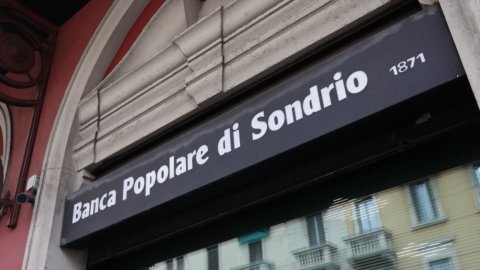Fifty billion to support small and medium-sized Italian businesses, the hardest hit by the Covid crisis. This is yet another commitment by Intesa Sanpaolo, the first Italian bank and second in Europe by capitalization, which will make its contribution in the most delicate phase, the one in which some of the "parachutes" put in place by the Government are about to expire, which in turn will be involved in the next few weeks in final draft of the Recovery Plan.
It fits into this context the “Motore Italia” program: 50 billion euro of new credit in favor of liquidity initiatives and investments in the sustainable and digital transition, anticipating liquidity and support needs in view of the forthcoming deadlines of government measures, but also formulas for extending the duration of existing loans .
The scenario, in truth, is not even that desperate and leaves some glimmers of optimism. "Despite the alarming forecasts - explains Nando Pagnoncelli of Ipsos -, aggravated by the great uncertainty about the future, companies still manage to see more opportunities than risks within their own company". The confirmation comes from the data presented by the chief economist of Intesa Sanpaolo, Gregorio De Felice: "Thanks also to government measures, this time there was no wave of corporate bankruptcies which instead occurred after the 2008 crisis”.
Forecasts for the Italian GDP are still downwards in the first half of 2021, but on the other hand international trade has already recovered: in the two-year period 2021-2022 international trade flows are expected to recover sharply at +12,4%, after -9,4, 2020% of XNUMX. Global GDP growth expected at 5,3% in 2021, after -4,1% in 2020, with a driving role played by Asia and the United States (+6,2%). Italy is more sluggish, which will only recover 3,7% (half, as a percentage, of France and Spain) after -8,9% in 2020.
“But the potential for recovery is there – confirms De Felice – and one of the strengths is that an extra saving has been created by families and also of businesses. The former have consumed less, the latter have effectively stopped investments. This now translates into a liquidity reserve, into a firepower to be exploited in the coming months”. Motor Italia will also support this recovery, thanks also to the support of the resources made available through the Central Guarantee Fund and SACE. The program is structured in 5 points:
- Liquidity and extension of financing. To accompany companies on the road to recovery today, it is essential to identify new tools that favor a medium-long term perspective, capable of strengthening the financial positioning of companies, contributing to the progressive reconstruction of cash flows, recovering financial sustainability and seizing opportunities for new investments. An objective that Intesa Sanpaolo is aiming for thanks to 'Motore Italia', making available new solutions for extending existing loans up to 15 years, leveraging the current regulatory framework which allows the use of Central Fund guarantees at the 80% granted pursuant to the “de minimis” regulation. Furthermore, the Intesa Sanpaolo Group is planning new ways to develop solutions with each company to further extend the duration of the loans in progress, even beyond 15 years.
- Investments for the technological transition. The second pillar of the plan aims to support new investments to encourage technological renewal, digital transition, innovation and industrial research of SMEs. Intesa Sanpaolo's solutions and advice will accompany companies in reaping the benefits offered by the 4.0 Budget Law Transition 2021 plan, leveraging the tax measures envisaged for investors, in line with the objectives of the National Recovery and Resilience Plan (Recovery plan). To guarantee the effective and timely implementation of SME projects, Intesa Sanpaolo's strategy includes the support of important partners, able to accompany the investment plan from its conception to the ex post evaluation.
- Investments for the sustainable transition. Another fundamental area of intervention is the path of accompaniment to the sustainable transition of companies, dedicating measures to finance investments from an ESG and circular economy perspective. In fact, the transformation of companies in terms of environmental, social and governance (ESG) sustainability increases the value of their competitiveness, at the same time the adoption of "circular" business models will be a fundamental factor for the growth and relaunch of the Italian economy. On these premises, the new S-Loans are already active, which join the ceiling intended by Intesa Sanpaolo for investments in the Circular Economy. This is a specific line of loans aimed at supporting business initiatives towards sustainable transition, which in just a few months from their introduction have already made over 800 million euro available for projects carried out by small and medium-sized enterprises. A further line towards the sustainable transition concerns the interventions in favor of the efficiency and redevelopment of the Italian real estate assets. Intesa Sanpaolo has activated, since August 2020, solutions for the purchase of tax credits linked to the Superbonus envisaged by the Relaunch Decree. In just a few months, the Group has received requests from companies for over 13.000 redevelopment projects for a value of 1,8 billion euro, which rises to 35.000 including direct requests from private individuals and condominiums.
- Structured and extraordinary finance. The strengthening of the offer and consultancy structures dedicated to corporate finance operations for SMEs represents a further area of intervention by 'Motore Italia'. The goal is to encourage the dimensional growth of companies through M&A operations, capital strengthening or innovative finance solutions such as the issue of bonds. Intesa Sanpaolo's new proposal is able to accommodate the evolution of the market context, having equipped itself in IMI CIB with a structure for extraordinary finance dedicated to SMEs, which reserves an assistance service from the emergence of the need up to the execution of the operation, similarly to what is usually done with large companies. The offer is further strengthened as it includes innovative financial instruments and bonds with public guarantees and helps to strengthen the bond between companies and institutional interlocutors. Thanks to the collaboration with Elite of Borsa Italiana, experiences such as basket bonds and Elite Lounge for SMEs have already been launched. This is an innovative specialist support dedicated to SMEs compared to an operation normally reserved only for large companies, which has already supported over 300 deals for a value of over 4,5 billion euro.
- Non-financial solutions and qualified partnerships. The fifth pillar of the Plan provides SMEs with tools to encourage their orientation towards digitization and development, including through non-financial services. To fill the digital gap, Intesa Sanpaolo ForValue and its partner companies offer companies support in digital positioning to strengthen their presence on the web and ensure their competitiveness in the current and potential market. Furthermore, thanks to the new entity operating in the Group, Intesa Sanpaolo RentForyou, SMEs will be able to opt for long-term operating leasing as an alternative solution to the purchase of capital goods.
“One year after the first measures undertaken to maintain the economy – he summed up Stephen Barrese, head of Banca dei Territori, the division closest to SMEs -, Intesa Sanpaolo confirms itself as a faithful ally of SMEs by promptly adopting, in this still critical phase, the most suitable and indispensable measure to offer them greater financial peace of mind: the extension of duration of existing loans. On the one hand, this lengthens the debt repayment horizon, on the other it allows companies to plan investments that we are ready to support with new credit for 50 billion euros. Since the beginning of the pandemic, we have dealt with emergencies with initiatives and disbursements from the Banca dei Territori for SMEs amounting to 45 billion euro in 2020, supporting the management of short-term financial commitments, financing liquidity and intervening with the suspension of installments and with specific interventions on the most affected sectors. Now is the time to take an extra step to accelerate the relaunch together".





